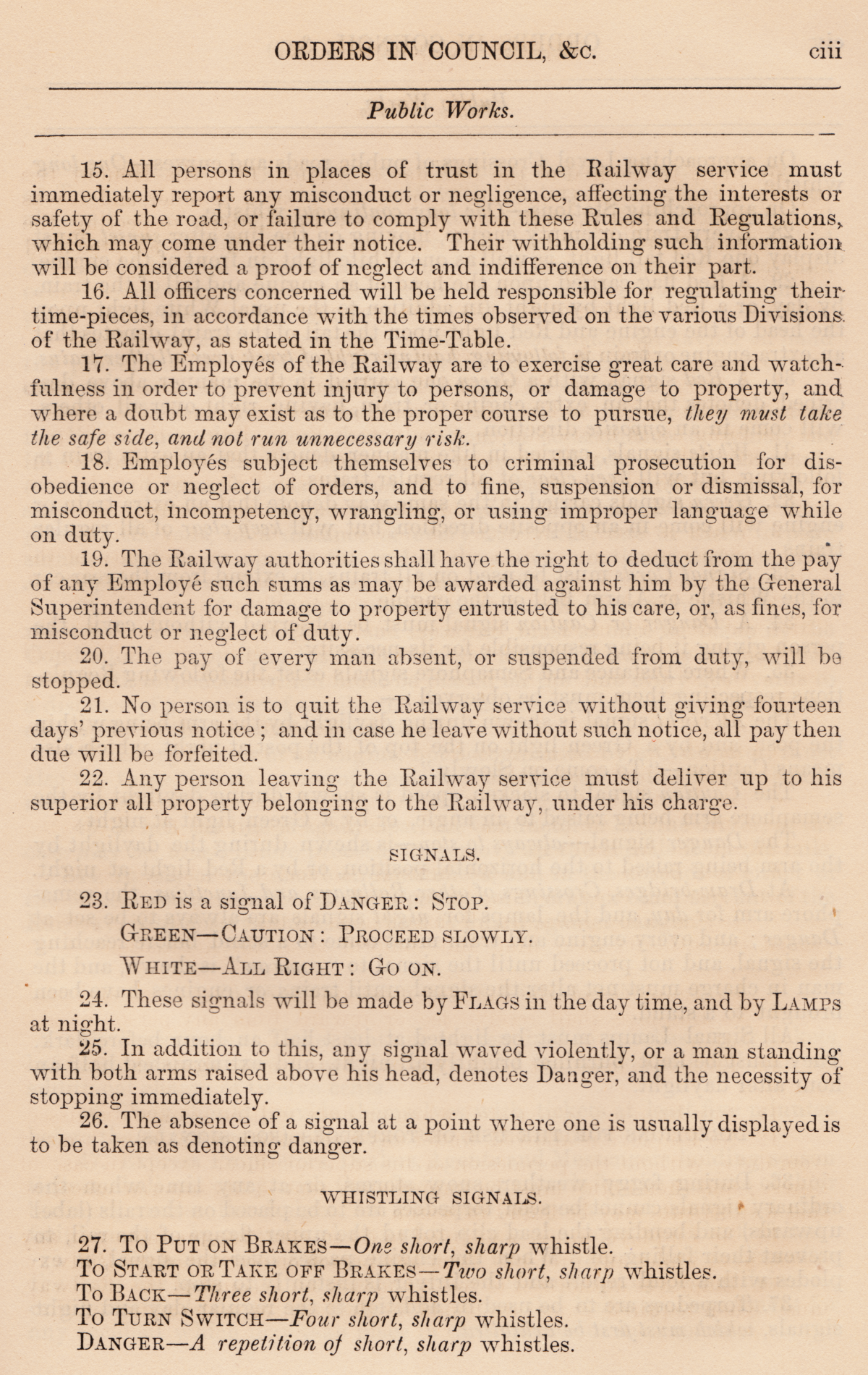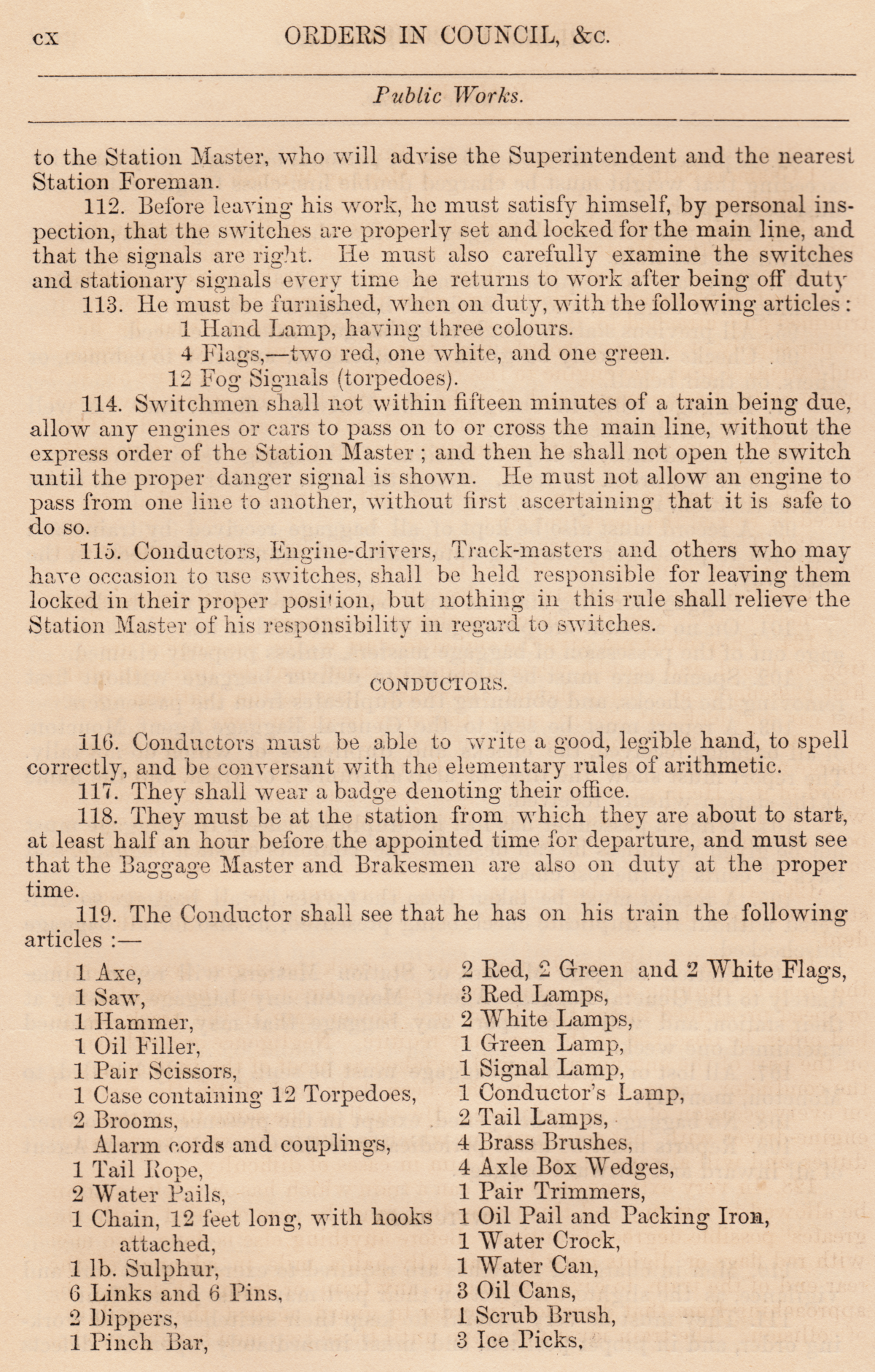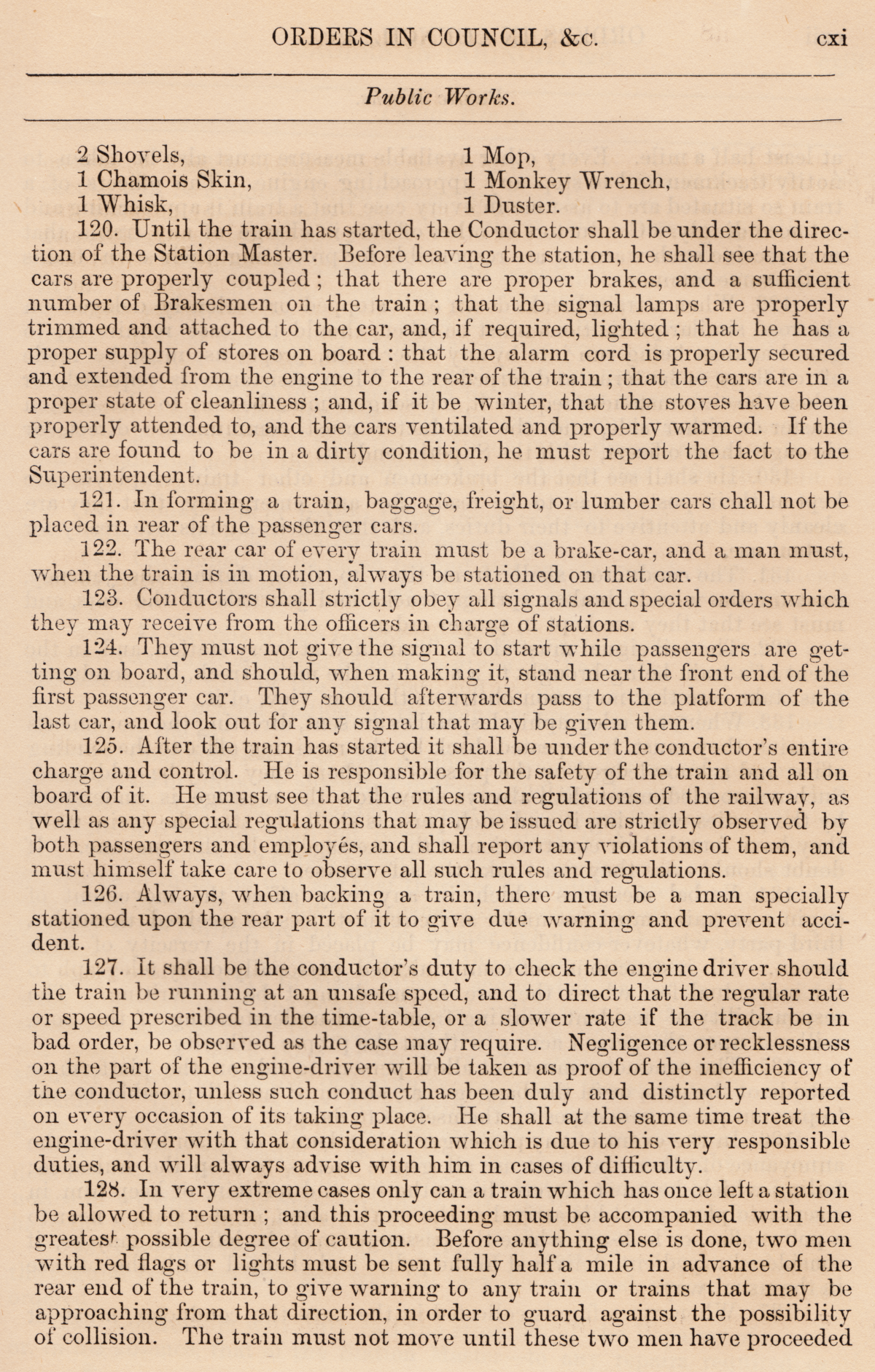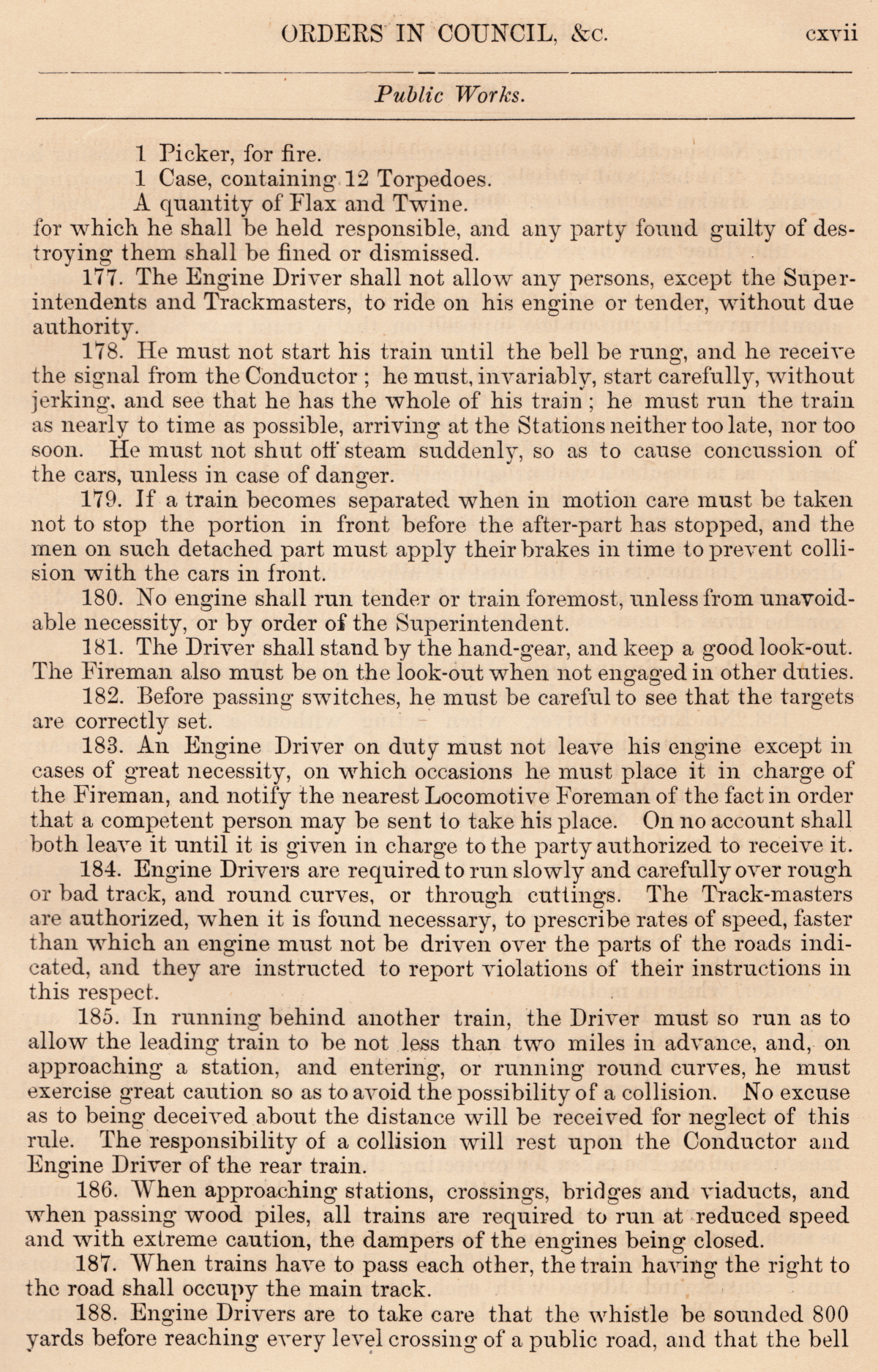When the country of Canada was 10 years old, this book of Government Statutes and Orders in Council was printed. In it, one can find a fairly complete and detailed description of how early Canadian railway operations were standardized - at least for this well-engineered, well-built and expensive railway which was owned by the Government of Canada.
Comparing, as we like to do with the Americans, the effort to develop national 'best practices' for American railroad operating rules began when the Uniform Train Rules and Rules for the Movement of Trains by Telegraphic Orders was approved as the first authorized 'Standard Code' by the General Time Convention of the United States in July 1889.
The aptly named Intercolonial Railway was federal project designed to help meet the demands of some of British North America's maritime colonies - as a condition of them agreeing to join the Canadian confederation.
Above, is the title page of the ragged and dusty 300-page, 146 year old 'law book'.
* * *
Below, is a 'more recent' reference from 1887 which maps out the Intercolonial and its operations.
 |
| from Travellers' Official Guide, December 1887. |
 |
| from: Travellers' Official Guide, December 1887. |
* * *
This is the second time I have posted these rules to the internet because of their historical value. About 20 years ago, I typed them out in full using the Netscape HTML editor because free internet websites were very limited in their size.
'Oh, it was the good old days of the internet! ...'
To be more illustrative, about eight copies of the Intercolonial map (above) would have used up all of my 'free' website room. And that's why I typed all the rules out. They are still 'out there' - stored somewhere beyond my control on a Google server. Google kindly sends me monthly reports on traffic and the top keyword searches which lead people to my old website.
... Span the world, you tiny, efficient HTML characters of the original Rolly Martin Country!
* * *
The 1877 Intercolonial Railway rules begin below:
Note: The 'brakesmen' apply hand brakes.
Rule 33. Most equipment had no compressed air train lines (but Rule 175 indicates some did). At least one serious loss of life incident occurred in Canada (February 28, 1874 on a Great Western Railway train operating between London and Komoka) when a fire started in the wooden coaches and the cord failed to work ... and the engine crew was apparently not looking back regularly to observe their train.
Here is an earlier illustrated article on the development of this important technology:
 |
| from: Summer Tours and Excursions on the Intercolonial Railway, 1894. from archive.org |
Rule 119. You can see all the supplies and equipment needed to maintain, cool and repair defective 'plain' bearings. Also, 6 Links and 6 Pins ... the coupler knuckles of their day.
Rule 121. Telescoping of cars into wooden coaches in the event of an accident was a significant hazard ... as were overturned wood/coke/coal stoves and kerosene lighting appliances.
Rule 122. In the event of a link coupler breaking while ascending a grade on a non-air-brake consist ... you can imagine that it would be important to have someone who was readily aware of the situation, with an operating handbrake at the 'headend' of the reversing, descending cut of runaway cars.
 |
| from: Souvenir of the Intercolonial Railway, 1896. archive.org |
The seemingly tiny locomotive can pull all of those coaches because most of them are probably wooden.
Rule 176. Tallow kettle. Before the availability of cheap, plentiful supplies of lubricants derived from petroleum ... animal fats were used on some locomotive bearings and valves, and they were kept in a semi-liquid state in a 'kettle' on the hot locomotive backhead. As the power of locomotives increased, having 'engineered' petroleum lubricants became a necessity.
Rule 217: At a road crossing at grade, cattle guards were wooden or metal, slats or grids placed along both sides of the public road. They would also have been used at some farm crossings. The 'unsure footing' created by the guards prevented the cattle from venturing into the sometimes attractive and lush vegetation growing along the ditches between the railway right-of-way fences.
In the past, public roads and farm crossings were often used to move livestock over railways.
On an established farm which was split by one of the new railways ... animals might be moved between pastures, or, animals might be brought in twice a day for milking ... across a farm crossing.
Before the development of motor vehicles which could transport livestock, animals going away to a market or to a slaughterhouse ... might be driven along public roads from the farm to a settlement with a railway stock car loading ramp.
Rule 220: Probably derails.
Rule 227: More detail than you'd ever want to know about telegraph history, and railway telegraph technology and telegraph line troubleshooting, can be found by pressing the 'radio button' at the very top of this page for the Railway Technology & Systems 04 Index ... and then scrolling down to 'T'.
Rule 228: Engine crews often tried to make as few water stops as possible. If water was not available where it was expected to be ... the engine might have to run light (i.e. running faster and consuming less water/steam) to the next water tank. In rare, extreme cases, the fire might have to be 'dropped' to avoid damage to the boiler or a boiler explosion - probably followed by 'paperwork' to account to the Superintendent for this deviation from efficient operations.
End of the Intercolonial Railway section of the book.


























